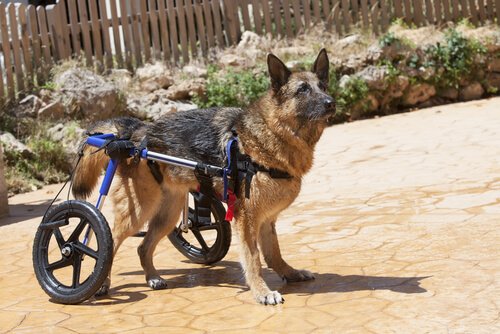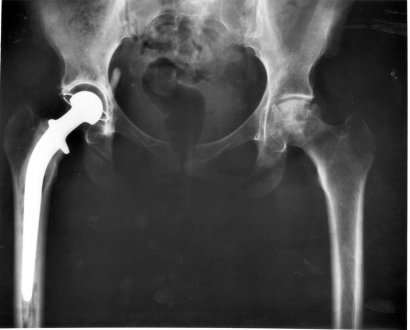Hind End Weakness in Dogs

Sometimes older dogs lose the strength in their hind legs. However, this can happen in younger dogs as well. There are several reasons why this happens, so it’s important to identify them and learn how to prevent them. In today’s article you can find out what causes to hind end weakness in dogs.
Causes of hind end weakness in dogs
When a dog begins to grow weaker — or even becomes paralyzed — in his back legs, there are three main types of causes: neurological, orthopedic, or symptomatic. When the causes are neurological, something called paraparesis or acute paraplegia occurs.
This most usual cause of this kind of paralysis (which starts with hind end weakness) tends to be a degenerative vertebral disc disease, which is extremely common in dogs and very rare in cats.
This condition is known as a Hansen I-type herniated disc. There’s a Hansen II type as well that has a more chronic progression, which makes it less aggressive.

Hansen I herniated discs particularly affect Teckels, Cocker Spaniels, Beagles, Pekingese, and Shih Tzu, among other breeds. If you believe your dog has a hernia in the back or if a vet has diagnosed your dog of having one, don’t hesitate to visit a neurological specialist.
The longer your dog goes with an untreated herniated disc, the worse the aftermath can be. However, if you notice it in time, the problem can be addressed through surgery.
Surgery for Hansen I
While we cannot advise whether it’s a good idea to undergo surgery, we can provide necessary information for you to make that decision yourself. First, it’s important to understand that not all surgeries work. However, there is a relatively high success rate when the disease is diagnosed in time.
It all depends on what the neurologist says. The surgery can be avoided if the animal is still able to walk despite having a hernia, and if the professional says the disc is only sticking out.
In that case, you dog will have to go through a six-week treatment plan that includes strict rest, a supplement with corticoids and a gastric protector.
It’s worth nothing that, if you decide to do the surgery, you should know that the animal will need a couple of weeks of total rest. The chances of reversing hind end weakness are high.
Other causes of hind end weakness
Spinal cord injury is one of the principal causes of paraparesis or acute paraplegia. In such case, you must examine the animal to rule out other injuries. Surgery might be the best option for recovery.

Though there are some treatment options without having to go through an aggressive surgery, they usually end up having poor results. They produce micro fractures in the disc that makes the condition even worse. A vascular problem, or an infection that affects the spinal cord, can also cause hind end weakness or paraplegia.
Many pet owners don’t realize that something as common as distemper can cause hind end weakness in dogs. Distemper can be difficult to immediately identify due to its plethora or symptoms and signs, this also includes hind end weakness being.
Dogs between three and six months are most vulnerable to this condition. However, you should never rule it out in older dogs if you think they are exhibiting symptoms. Therefore, you should always vaccinate your dog and avoid contact with other dogs that might have distemper. Remember that your dog could die from this condition, so your dog will better off if he is diagnosed with paralysis.